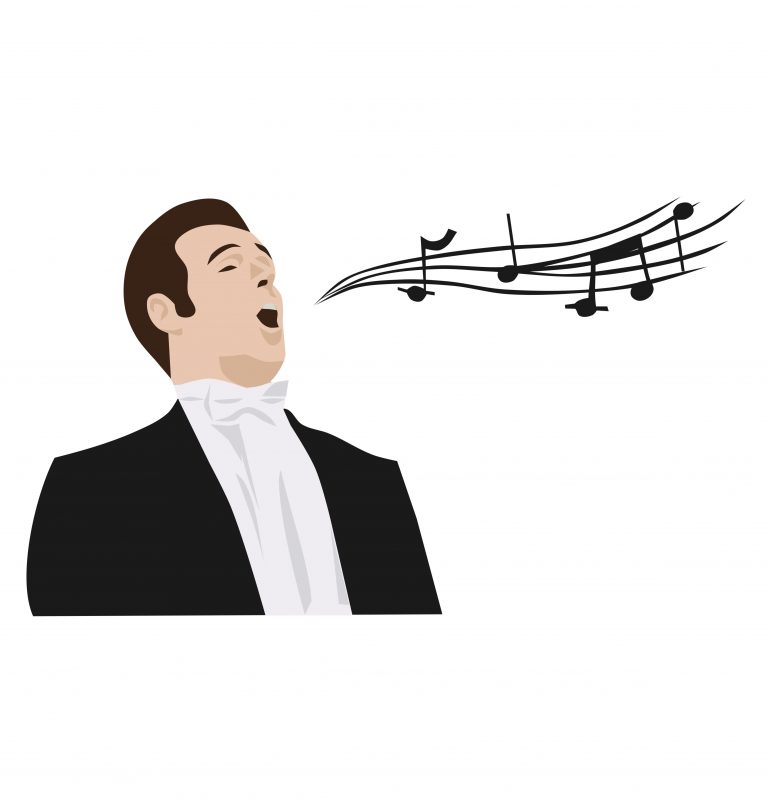SPEAKING AS YOU SING, SINGING AS YOU SPEAK
There’s an old saying, “Speak as you sing, and sing as you speak”. The problem is, this only works if you are doing one, or both, correctly! I often find that singers completely forget their good habits when they talk, and this can create problems that affect both their singing and their speaking. I was inspired to write this post by a lesson today with one of my private voice students, who is struggling to sing without it hurting her throat, a very common problem for beginning singers, and especially those that sing contemporary music. When she is in her lesson and incorporates the techniques I am teaching her, it doesn’t hurt. But when she is in the recording studio, she hurts her voice and then has to go on vocal rest for a few days to recover. NOT a good scenario!
Figuring Out the Problem
As we spoke, and as I worked on diagnosing the source of the problem, it became evident that she is still not making the connection of taking a good breath, supporting the breath properly and then allowing the air to flow through the body and head to create a freely-released sound. Since she has very deeply-ingrained singing habits, especially when she sings commercial music (e.g. pop, alternative, R&B) in the studio, we’ve been working on more “legit” repertoire (e.g. traditional musical theater, classical art songs, folk songs) in the lessons to train in good singing technique. While this has helped, there has still been a big disconnect for my student in carrying over the new, healthier singing habits into the songs she usually performs and records. I decided to take a different approach…
Listening to her talk, it became evident that she speaks softly, low in pitch, and in a monotone. I also hear “gravel” in her voice. This is what we call “speaking on the cords”. You don’t want to feel anything in your throat when you sing or speak— those vocal cords are involuntary muscles that operate below the level of conscious thought. Don’t try to “make” them do anything! Forget about your throat, and turn your attention higher, into the face and head (more about that in a minute).
First-Hand Experience
When you’ve been singing professionally and teaching voice for more than thirty years, as I have, you’re bound to have experienced many of the same ups and downs that your singing colleagues and students have experienced as well. It’s part of being human, and having an instrument that is inside your body, and affected by everything that happens to that body, good and bad, during your life.
Unfortunately for me, back in the early 1990’s I experienced a virus which caused the growth of viral cells directly on my vocal cords. Disaster! I was extremely busy performing and teaching at the time, and was just getting ready to leave on a national concert tour with a professional choral ensemble. But I had noticed that I was getting more and more hoarse by the week, experiencing breaks between the registers and feeling tension and discomfort in both my singing and speaking voice. I was always so careful about my technique, so I knew it had to be a medical problem. Luckily, there was a fantastic laryngologist (Ear, Nose and Throat doctor specializing in larynx and vocal cord issues) near my home. It turned out that nothing could cure these cells but removal, so I had to face what any singer would dread– surgery on the vocal cords!
The good news is that the viral cells were benign, and I would recover well and relatively quickly. But the reason I bring this all up is that after surgery, I had to remain completely silent for about a week while my vocal cords healed. Once that was successfully completed, then I would be allowed to start talking again. Except–– I found it incredibly difficult to reconnect with my speaking voice!— especially after the months of it not functioning properly due to the illness. What helped me finally get talking again?— my good singing habits! That’s right, I started using all of my singing technique to activate my speaking voice-– breathing correctly, supporting the voice from the body, letting the air flow freely through the throat into the head and out the mouth. I sustained my vowels and kept my consonants far forward on the lips and front of the tongue, concentrating on feeling the voice in the face, not the throat. I first gently sang through songs, and then spoke sentences from magazines or books, keeping those same singing sensations present as I started to talk. Thank God for singing!
Quick and Effective Solutions
Now, how did this help my struggling student today? And how can it help you? While I am not a speech therapist, I know from my own past experience as a patient, a singer and a voice teacher what healthy vocal production is. I know how to get it into speech, as well as into singing. So, I gave my student some simple exercises to help her speech production (with the additional goal of it helping her singing).
The first exercise was to have her count to ten slowly, stretching the vowels (which carry the bulk of the sound, relax the throat muscles and introduce more air into the vocal line). We started her “chanting” her counting on a pitch higher than her speaking voice, and then repeated the exercise multiple times, working our way down into her normal speaking range. Her goal was to keep the relaxed, flowing feeling and forward momentum of the air, and most importantly, the placement of the voice up in the face, around the eyes, nose and lips. Now she wasn’t feeling the voice in the throat, as she had previously. Once my student was close to her usual speaking range, I had her speak the exercise normally, but trying to maintain the same vocal and physical sensations she had while chanting on the higher pitches. Success! Her speaking voice was louder, freer, clearer, and on a slightly higher, healthier pitch. Her voice was well-placed, in what voice teachers usually call “the mask”, up in the front of the face. When I asked if it still hurt to speak, she said No! Victory!
An audio sample of how to perform this exercise, below*. (Please ignore the unrelated “suggested tracks” from SoundCloud that may pop up at the end of my audio sample):
The second exercise took the same approach, chanting while having her repeat an actual sentence from a book. As before, we started at a higher pitch level and then slowly moved down into her speech range. This time we also added a hand and arm movement that mimicked what I call “tossing a big salad”, lifting the arms up and out (you can use one or both) to copy the action of the air moving through the body and then releasing the sound. It’s relaxing, distracting, and very effective in completing the circuit of vocal flow. My student again felt vocal freedom with no pain, and a new sense of where she should be feeling her voice– in her face, not her throat! See the photo below for inspiration. Unlike the woman in the photo, though, do keep your head level as you sing or speak while you “toss your salad” high in the air!

An audio sample of how to perform this exercise, below*. (Again, please ignore the unrelated “suggested tracks” from SoundCloud that may pop up at the end of my audio sample):
From Speech Back into Singing
So– now we had to take this new sensation from improved speech production back into the singing. Hallelujah! The habits from the speaking exercises started to carry over into my student’s singing voice, just as they did for me years ago, when I was recovering from surgery and designing my own vocal therapy. Now my student felt true vocal freedom, and heard greater clarity and carrying power in her sound. But most importantly, she had no pain!
The Big Lesson: Singing should never hurt. Period! And neither should speaking. Let the speaking help the singing, and vice-versa. The old maxim really is true. Speak as you sing, and sing as you speak!







